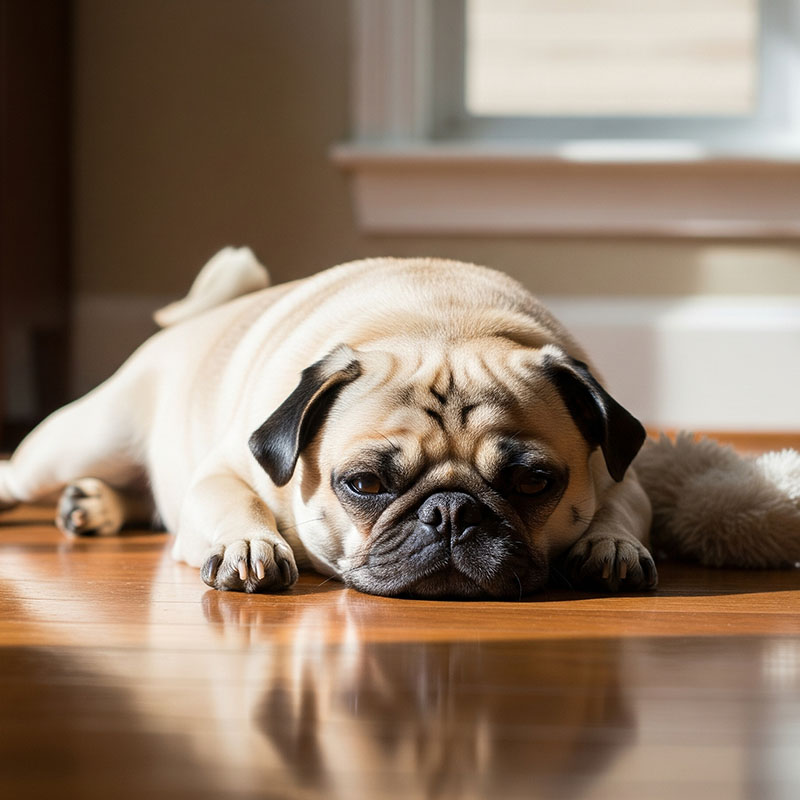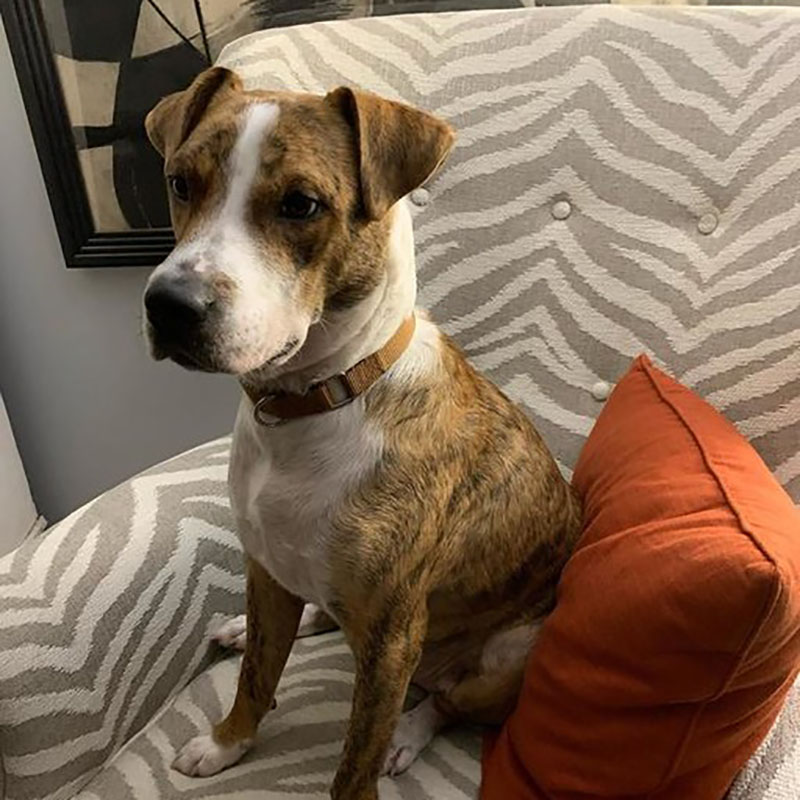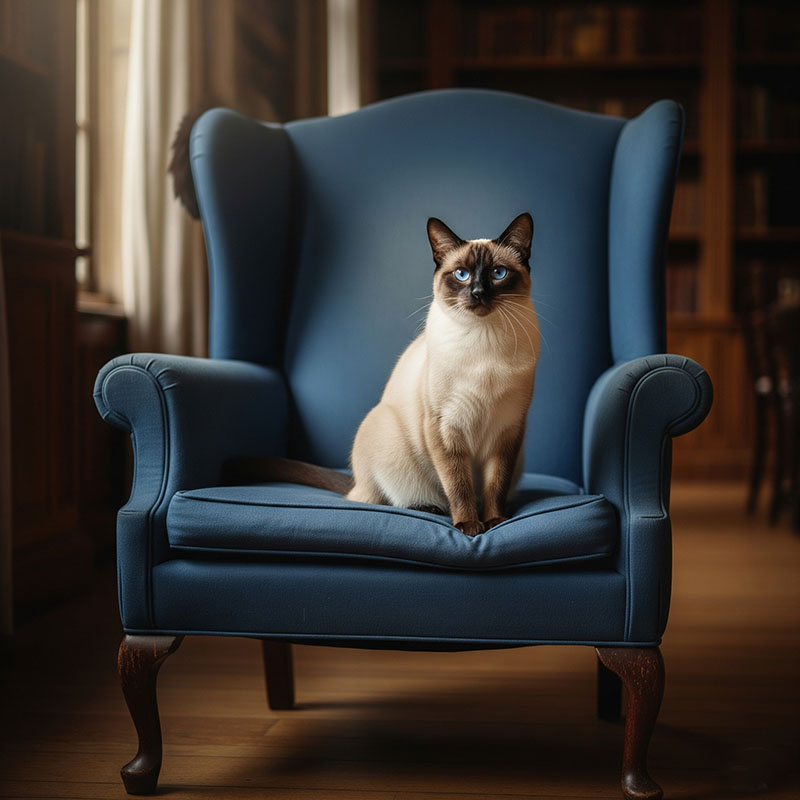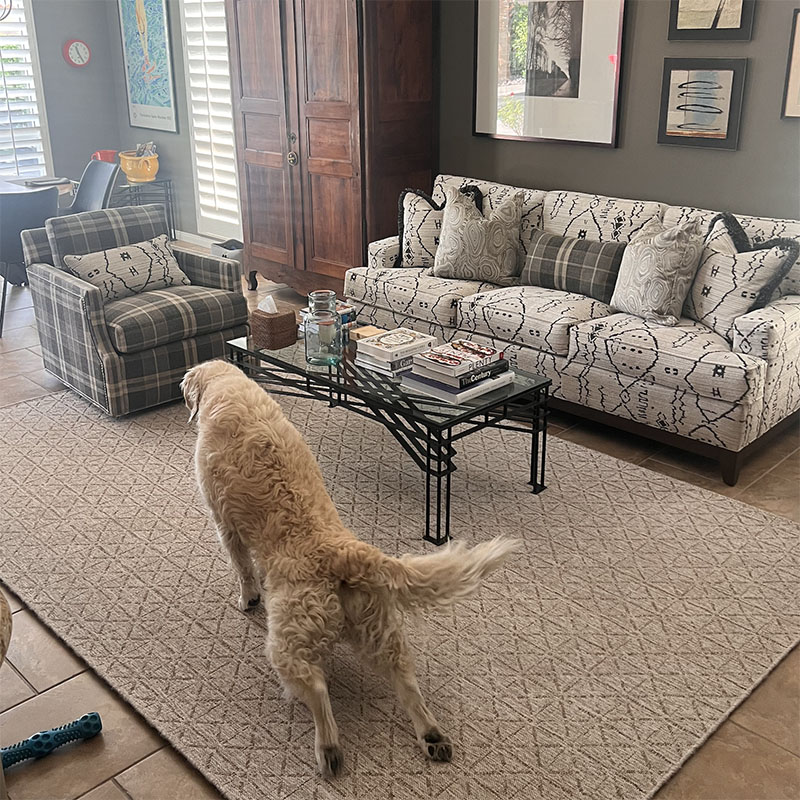Pet-Friendly Home Design: Solutions for Your Furry Friends

As pet parents, we adore our four-legged (or feathered, or scaled!) family members. They bring immeasurable joy, comfort, and sometimes, a little bit of chaos into our lives. While we wouldn’t trade them for anything, creating a home that’s both stylish for us and comfortable and durable for them can sometimes feel like a puzzle.
Fear not, fellow animal lovers! It is possible to have a beautifully designed home that stands up to wagging tails, playful paws, and the occasional shedding spree. It’s all about making smart, strategic choices in your materials, furniture, and layout.
Let’s dive into how you can achieve a harmonious home for both you and your beloved pets.

1. Flooring: The Foundation of Pet-Friendly Living
Your flooring takes the brunt of pet activity, from muddy paws to spilled water bowls. Choosing the right material is paramount.
- Hardwood (Engineered is Best): While classic, solid hardwood can scratch easily. Engineered hardwood is a better option due to its durable top layer and increased resistance to moisture. Look for harder wood species (like oak or maple) and consider a distressed or matte finish, which will better camouflage scratches.
- Luxury Vinyl Plank (LVP) or Tile (LVT): These are absolute superheroes for pet owners. They are incredibly durable, scratch-resistant, waterproof, and easy to clean. Plus, modern LVP and LVT come in a stunning array of styles that convincingly mimic wood or stone.
- Tile (Porcelain or Ceramic): Naturally cool, incredibly durable, and waterproof, tile is an excellent choice, especially in high-traffic areas like entryways, kitchens, and bathrooms. Grout lines can accumulate dirt, so consider a darker grout color or larger tiles to minimize this.
- Avoid (or Use with Caution): Wall-to-wall carpeting can trap pet hair, dander, and odors, and is prone to stains. If you love the feel of carpet, opt for carpet tiles (easy to replace individual soiled squares) or confine soft coverings to low-traffic, pet-free zones like a formal living room or bedrooms.

2. Upholstery: Choosing Fabrics That Forgive
Your sofa and chairs are prime spots for pet snuggles (and shedding). Select fabrics that are resilient and easy to clean.
- Performance Fabrics: This is your secret weapon! Look for terms like “Crypton,” “Sunbrella,” “Olefin,” or “solution-dyed acrylic.” These fabrics are engineered to resist stains, odors, moisture, and fading, making them a dream for pet owners.
- Leather (or Faux Leather): Surprisingly pet-friendly! Leather is durable, easy to wipe clean of fur and spills, and tends to develop a beautiful patina over time that can hide minor scratches. Just be mindful of sharp claws; while minor scratches often blend in, deep punctures can be an issue. Faux leather offers similar benefits at a lower price point.
- Microfiber/Microsuede: These tightly woven synthetic fabrics are soft, durable, and notoriously good at repelling liquid. Pet hair also tends to vacuum off easily.
- Avoid: Delicate fabrics like silk, velvet, or linen blends that can snag easily, show stains readily, and attract and hold onto pet hair. Also, very textured weaves can trap fur.

3. Furniture Selection: Built to Last (and Look Good)
Beyond upholstery, consider the structure and style of your furniture.
- Solid Construction: Opt for furniture with sturdy frames and durable finishes. Look for pieces that can withstand bumps and jumps without wobbling.
- Elevated Furniture: Sofas and chairs with legs allow for easier cleaning underneath, preventing dust bunnies and pet hair from accumulating in hard-to-reach spots.
- Storage Solutions: Incorporate stylish baskets or ottomans with hidden storage for toys, leashes, and pet blankets. This keeps clutter at bay and maintains a tidy look.
- Scratch-Resistant Surfaces: For coffee tables and end tables, consider materials like solid wood (which can be refinished), stone, metal, or tempered glass that are less prone to visible scratches than softer wood veneers.

4. Layout & Accessibility: Designing for Their Needs (and Yours!)
A pet-friendly home isn’t just about durability; it’s about thoughtful design that caters to your pet’s comfort and integrates their necessities seamlessly.
- Designated Pet Zones: Create specific, comfortable spots for your pet to sleep, eat, and relax. This could be a stylish dog bed, a cozy cat tree that doubles as a sculpture, or built-in feeding stations.
- Easy-to-Clean Entryways: Place durable mats and runners at all entry points to trap dirt and moisture from paws before it spreads throughout the house.
- Integration is Key: Instead of tucking away pet beds in a corner, consider attractive pet beds that complement your decor. Many brands now offer chic designs and washable covers.
- Vertical Space for Cats: Cats love to climb! Incorporate cat shelves or stylish cat trees that allow them to survey their domain from a higher vantage point without sacrificing your aesthetic.
- Safety First: Secure loose cords, keep toxic plants out of reach, and consider pet gates in open doorways if you need to restrict access to certain areas.

5. Color Palette: Hiding a Multitude of Sins
While not a material choice, your color scheme can significantly impact how clean your home appears.
- Mid-Tone Hues: White shows every smudge, and very dark colors highlight light pet hair. Mid-tone neutrals like taupe, greige, tan, or even muted blues and greens can be surprisingly forgiving, especially if they’re close to your pet’s fur color!
- Patterned Fabrics: Subtle patterns on rugs or upholstery can help camouflage minor stains or pet hair that hasn’t been vacuumed up yet.
Creating a beautiful home that coexists harmoniously with your pets is entirely achievable. By making informed choices about your materials, furniture, and layout, you can design a space that’s not only stylish and inviting but also incredibly resilient, ensuring years of happy memories with your beloved furry companions.
